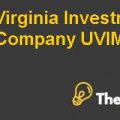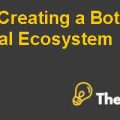Introduction
Leadership development can be an integral component of organizational sustainability. Organizations striving to survive and succeed in today’s turbulent and highly competitive business environment need to develop leadership at all levels (Dalakoura, 2010). Leadership development can be a source of sustained competitive advantage for organizations (McCall, 1998; Vicere & Fulmer, 1998), as well as a source of profit (Leskiw & Singh, 2007; Mannion, 2009; O’Toole, 2001), and an impetus for strategic change (Cacioppe, 1998; Ready, Vicere, & White, 1994).
Riggio (2008) argues that although there are leadership development programs and a positive belief in them in most organizations, these programs fall short, because training and development models are generalized, and therefore, inadequate. The traditional perspective of leadership development as an individual phenomenon is no longer adequate to explain the success of an organization (Conger, 1993).
Early leadership trait theories assumed that individuals were born with specific personal traits, such as intelligence, confidence, and loyalty, and that traits predict successful leadership (Conger, 1993). Measuring a specific individual personal trait as a predictor of successful leadership and the success of an organizational is inadequate; instead, a more systematic approach is required (Barker, 1997; Hunt & Dodge, 2001; Osborn, Hunt, & Jauch, 2002; Porter & McLaughlin, 2006).
A better program model, according to Riggio (2008), is one that is based on the assessed needs of the leaders and organizations in which they lead, because it sets specific and measurable training goals. This systematic approach supports the alignment of clear organizational goals with concrete actions and definite consequences to address business-specific strategies.
By addressing business-specific strategies, leadership development and training will follow the logic of the alignment of goals, actions, and consequences to firm’s performance, making this leadership development model more effective than an individualistic approach. In the last decade, corporate expenditures for leader development have surpassed $45 billion (Vicere & Fulmmer, 1997). Despite the large amount of money spent on leadership development by Fortune 500 companies in the United States, leadership development is ineffective (Dolezak, 2005).
This descriptive qualitative case study will describe why traditional individualistic leadership development is ineffective and provide possible solutions for effective leadership development by surveying two individuals that have some responsibility for creating or conducting leadership development, and by interviewing 10 current and 10 former two-year leadership development program participants who work for the largest European-based electronics and electrical engineering multinational conglomerate in the United States.
Chapter one basically introduces the concept of leadership, its importance within an organization. It also involves increasing prevalence of leadership development programs (LDPs) in the United States, the desire to measure program efficacy, and the linkage to organizational performance.
Background of the Problem
This research problem is of important social concern, because, according to the American Society for Training & Development (ASTD, 1995) 60% of Fortune 500 companies listed leadership development as a high priority and believed that leader development was becoming increasingly more important to their organizations.
While considering this priority and increasing importance, only slightly more than 50 percent of all leaders are satisfied with their organization’s leader development opportunities, and three out of 10 leaders fail to demonstrate the key qualities necessary for effective leadership (Bernthal & Wellins, 2006) – a definite concern since some research has determined a link between leader development programs and company performance (Allen & Hartman, 2008).
In a 2004 study of 127 United States and Canadian organizations which is conducted by Allen and Hartman (2008), leadership development was linked to improved return on equity, profit margin, and cash flow to net sales (e.g., strong leader development combined with success management was linked to higher performing organizations) Dolezak, 2005).
The Evaluation of an Effective Two Year Leadership Development Model Case Solution
Despite the incredible time and money invested, there is little agreement upon the appropriate sources of learning for developing leaders (Allen & Hartman, 2008). Organizations have traditionally used single sources of learning as the mechanism for leadership development.
For example, Day (2001) defines leader development as a process that emphasizes the enhancement of individual-based knowledge, skills, and abilities associated with leadership roles. According to Day (2001), many organizations have focused their investment in leader development activities toward those sources of learning designed to enhance self-awareness, self-regulation, and self-motivation.
These programs are considered successful if employees can effectively draw knowledge or skill related to leadership in a way that leads to a behavior change (Cacioppe, 1998). At times, organizations use single sources of learning as the mechanism for leadership development (Allen & Hartman, 2008)............
This is just a sample partial case solution. Please place the order on the website to order your own originally done case solution.













